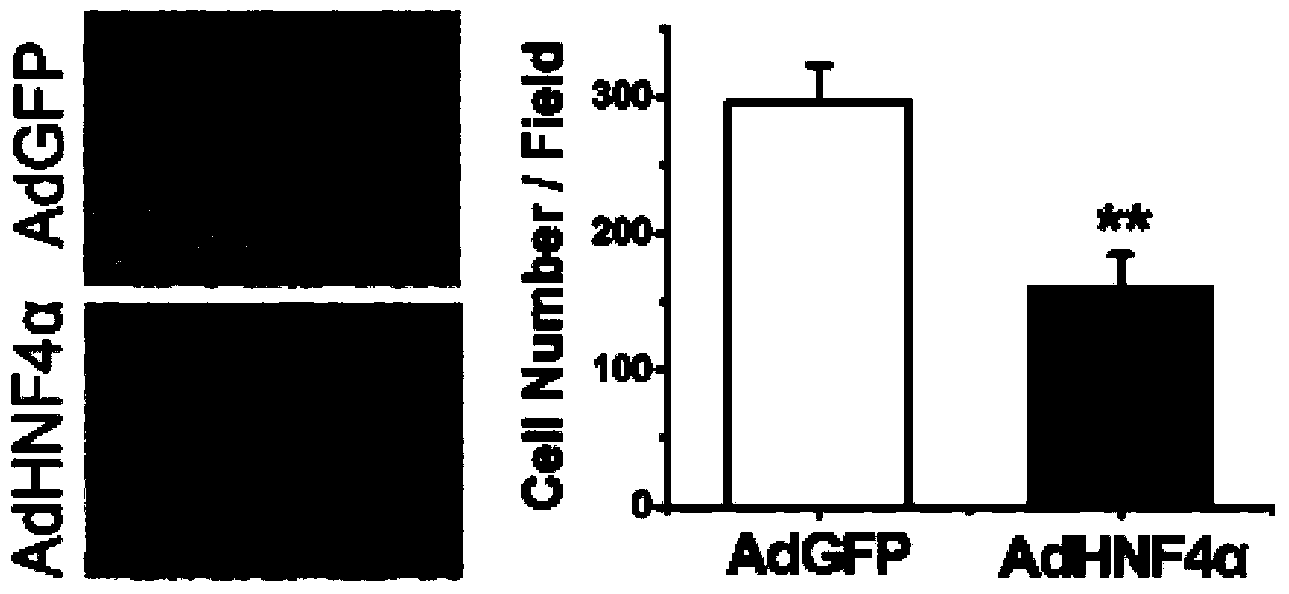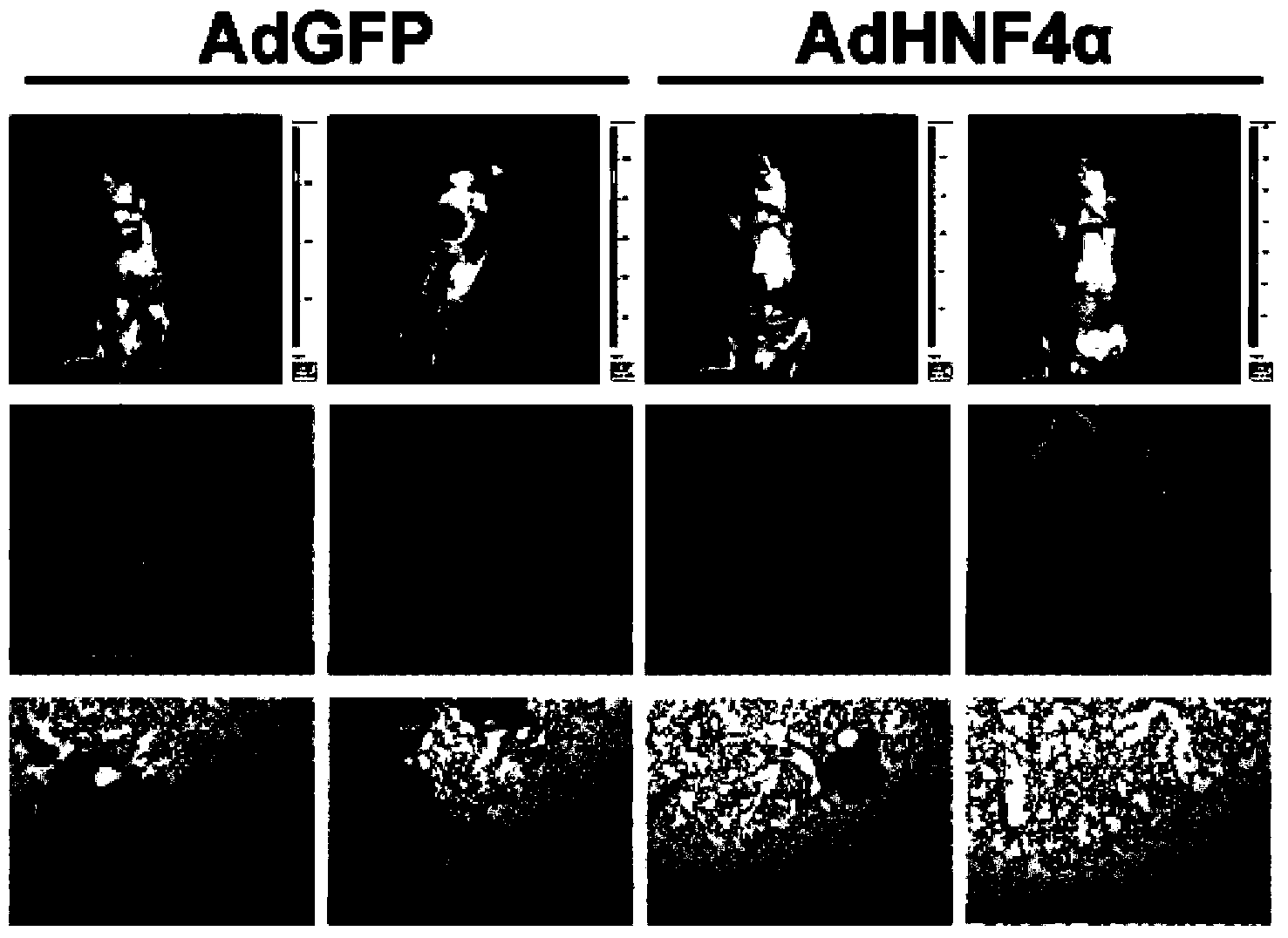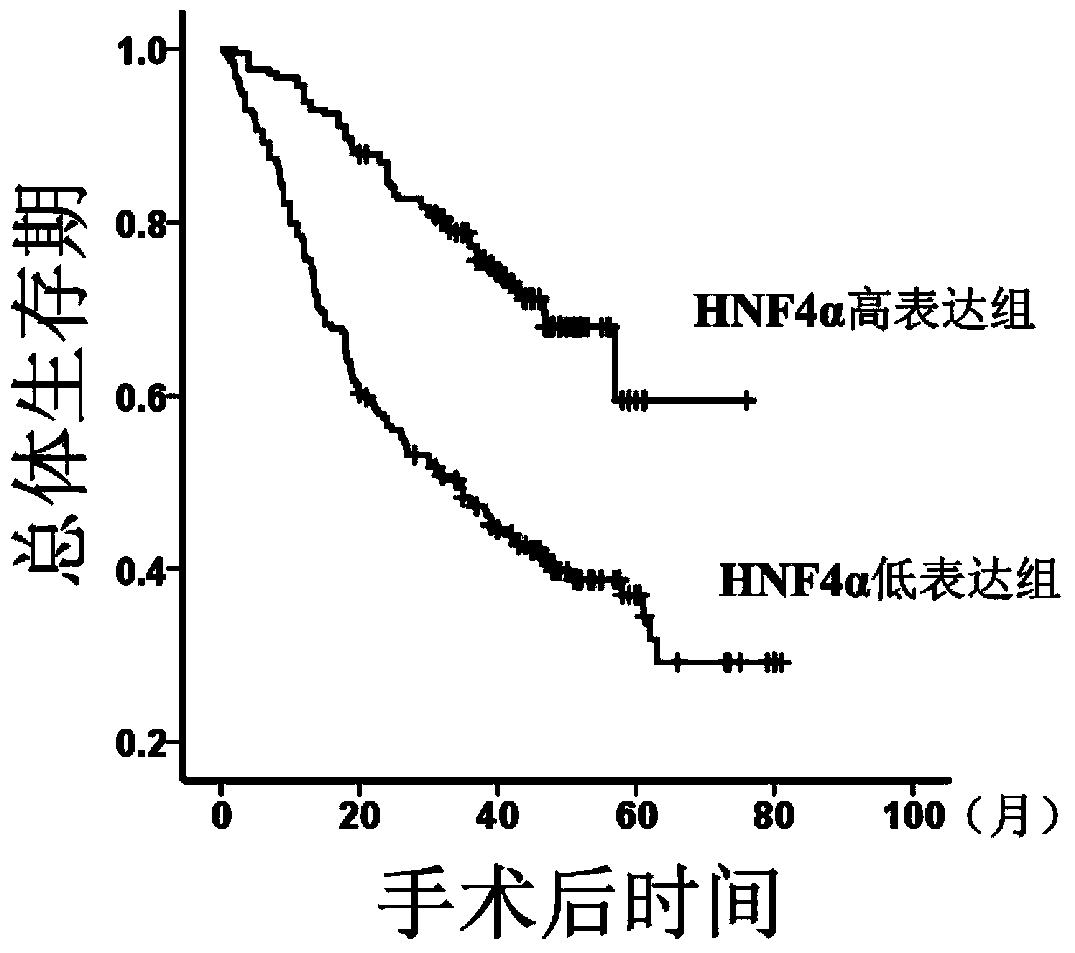Application of HNF4 (hepatocyte nuclear factor 4) alpha proteins to preparation of liver cancer prognosis evaluation kit
A liver cancer prognosis, α protein technology, applied in the biological field, can solve problems such as prognosis judgment of liver cancer patients without HNF4α
- Summary
- Abstract
- Description
- Claims
- Application Information
AI Technical Summary
Problems solved by technology
Method used
Image
Examples
Embodiment 1
[0049] 2×10 4 SMMC-7721 liver cancer cells overexpressing HNF4α and control cells overexpressing GFP were respectively inoculated on the upper layer of polycarbonate membrane chambers (products of Corning Company), and after 24 hours of culture, the cells passing through the polycarbonate membrane were stained with crystal violet. , observed and photographed under a microscope, counted the number of liver cancer cells passing through the polycarbonate membrane in each field of view, calculated the average value and calculated the standard deviation. The results showed that, compared with the control cells, the migration ability of liver cancer cells with high expression of HNF4α was significantly decreased in vitro ( figure 1 ), suggesting that HNF4α may inhibit liver cancer cell metastasis.
Embodiment 2
[0051] Forty-four 8-week-old nude mice were injected with 2×10 6 After stably expressing luciferase, SMMC-7721 liver cancer cells were divided into experimental group and control group (22 in each group). The experimental group was injected with adenovirus overexpressing HNF4α through the tail vein every week, and the mice in the control group were injected with adenovirus overexpressing GFP for 6 consecutive weeks. About 11 weeks after the cells were inoculated, the mice were intraperitoneally injected with the luciferase substrate, and the liver cancer metastasis was observed under an in vivo imager. The lungs of the sacrificed mice were observed and photographed, the number of metastases was counted and the volume was measured ( figure 2 ). The results showed that HNF4α could significantly inhibit the metastasis of liver cancer cells in vivo.
Embodiment 3
[0053] Randomly select paraffin sections of postoperative liver cancer tissues from 429 patients with liver cancer (the liver cancer tissue sections were all from Dongfang Hepatobiliary Surgery Hospital, and were diagnosed as hepatocellular carcinoma by 2 pathologists), and immunohistochemical methods were used to detect the expression of HNF4α protein in liver cancer tissues. Expression level and calculation of immunohistochemical score, the specific steps are as follows:
[0054] (1) Paraffin sections of liver cancer tissues were prepared, and the oven was set at 60° C. overnight;
[0055] (2) slices are dewaxed to water;
[0056] (Xylene Ⅰ①10min→XyleneⅡ②10min→XyleneⅢ③10min→100% ethanol 5min→95% ethanol 5min→85% ethanol 5min→75% ethanol 5min→double distilled water 5min)
[0057] (3) 3%H 2 o 2 Solution, placed at room temperature for 20min;
[0058] (4) Wash with double distilled water for 5min×3;
[0059] (5) Antigen retrieval: put slices into 0.01M citrate buffer (pH6....
PUM
 Login to View More
Login to View More Abstract
Description
Claims
Application Information
 Login to View More
Login to View More - R&D
- Intellectual Property
- Life Sciences
- Materials
- Tech Scout
- Unparalleled Data Quality
- Higher Quality Content
- 60% Fewer Hallucinations
Browse by: Latest US Patents, China's latest patents, Technical Efficacy Thesaurus, Application Domain, Technology Topic, Popular Technical Reports.
© 2025 PatSnap. All rights reserved.Legal|Privacy policy|Modern Slavery Act Transparency Statement|Sitemap|About US| Contact US: help@patsnap.com



